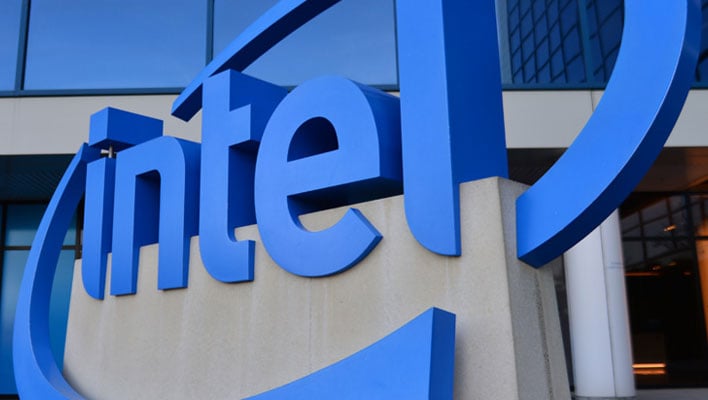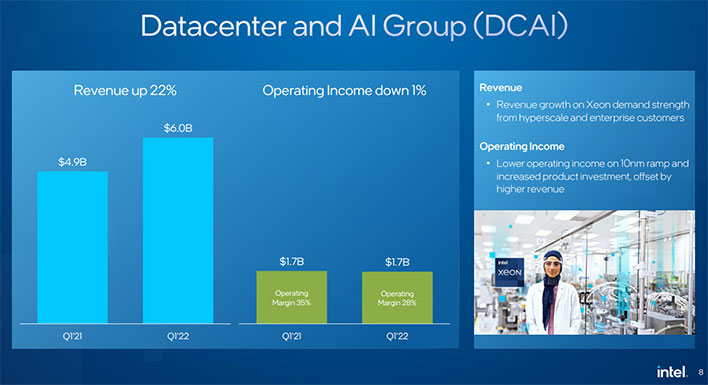Intel Posts Q1 Earnings Beat On Huge Data Center And Foundry Gains Offsetting PC Dip

The first quarter of 2022 is in the books at Intel and it was an overall big one, especially within its data center and Intel Foundry Services (IFS) businesses. The former raked in $6 billion, representing a hefty 22 percent year-over-year gain, while the latter skyrocketed 175 percent from the same quarter a year ago to add $283 million to the pile.
Along with Intel's other business categories, the combined sum for the Q1 tallied $18.4 billion. That's actually down 7 percent year-over-year, though Intel beat out expectations by around $100 million and is on pace to reach its full-year revenue guidance.
"Q1 was a strong start to the year, exceeding expectations on both the top- and bottom-line," said Pat Gelsinger, Intel CEO. "With a $1 trillion market opportunity ahead of us, we remain laser focused on our IDM 2.0 strategy. We executed well against that strategy in Q1, delivering key product and technology milestones and announcing plans to expand our manufacturing capacity in both the US and Europe to meet the continued demand for semiconductors and drive a more balanced, resilient global supply chain."
Intel also saw big gains in its Network and Edge Group (NEX), which shot up 23 percent to $2.2 billion, and its Accelerated Computing Systems and Graphics Group (AXG), which jumped 21 percent to $219 million. Its Mobileye division added another $394 billion on a 5 percent year-over-year gain, while its Client Computing Group (CCG) remained the biggest earner with $9.3 billion in revenue.
The latter is down from $10.7 billion a year ago. Intel attributed the decline in part to Apple's ramp down on its CPUs as the company completes its transition to its own Arm-based silicon. In addition, Intel said lower entry consumer/education demand and OEM inventory burn played roles in the softening client chip revenue.
Even so, Intel's CCG business remains in good shape. Intel's 12th Gen Alder Lake products continue to make headway with more than 250 designs planned for this year, and Intel remains on track to aggressively deliver five nodes in four years. To that end, Intel said Meteor Lake on its Intel 4 node has successfully booted Windows, Chrome, and Linux.
Meanwhile, Intel's data center business is booming. Intel said it is seeing strong demand for its Xeon processors from both hyperscale and enterprise customers, and it still has its Sapphire Rapids ramp on the horizon.
"I am also pleased to say that, as committed, we began shipping initial SKUs of our 4th Gen Intel
Xeon scalable processor, Sapphire Rapids, to select customers in Q1. These are the first of many
SKUs for Sapphire Rapids, with more due to ramp throughout the remainder of the year," Gelsinger said.
Looking ahead, Intel expects its full-year revenue to reach $76 billion, a gain of 2 percent over 2021. That will hinge in part on how well its first Arc Alchemist graphics cards perform in the market, as they will be begin shipping to customers this summer.



